- News
- A few more enticing golfing options in The Netherlands
A few more enticing golfing options in The Netherlands

A few more enticing golfing options in The Netherlands
We left a few loose ends behind when we returned from The Netherlands last year. The article that followed our visit, The Netherlands – a golf destination of surprisingly high quality, covered most of the country’s top tracks but there were a few courses that we just didn’t have time to see at that particular time, including one of great antiquity and a couple of more modern tracks.
We wanted to find out how the new Kyle Phillips course at Cromvoirt had turned out since we were over there and we needed to discover a little bit more about the only new entry in our Top 25 of The Netherlands rankings which were updated earlier this year. We’d also been alerted to a reversible 9-hole course that only opened this summer so another trip to the Kingdom of the Low Countries was the only way to satisfy our curiosity.
Bernardus
Bernardus, the new Kyle Phillips design at Cromvoirt in North Brabant, lies immediately to the east of the Dunes of Loon and Drunen National Park, one of the largest sand drift areas in western Europe. It’s no great surprise then to learn that the course occupies a sandy site, where fescue fairways are fringed by acres of transplanted heather to bolster the heathland appeal.
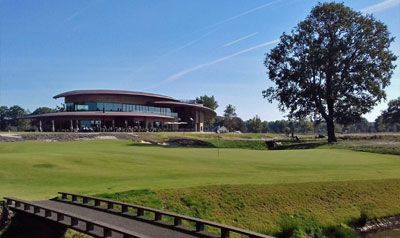
The course had a soft opening in the summer when ten holes were brought into play and it’s only become fully operational in the last few weeks. There’s a little bit of shaping and tree planting still to be carried out but, to all intents and purposes, Bernardus is now up and running, featuring a wonderful 18-hole course that’s complemented by a fantastic clubhouse-restaurant ensemble and the best practice facilities in the country.
Rosendaelsche
Rosendaelsche Golfclub is one of the oldest clubs in The Netherlands, established in 1895 before moving to its present location thirteen years later.
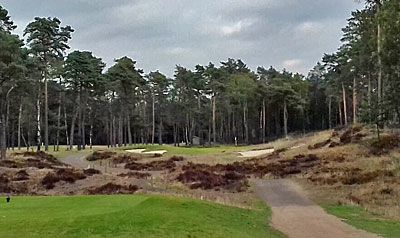
Today’s 18-hole layout was formed in 1977, after Frank Pennink added another nine holes to the original nine. Venue for the 1984 Dutch Open, Rosendaelsche is laid out across a glorious wooded heathland setting just off a busy road interchange to the north of Arnhem, with a fabulous new short game, practice area and driving range now in place.
The Dutch
The Dutch is one of the country’s new kids on the golfing block, located around 45 kilometres to the east of Rotterdam. The course was unveiled in 2011, but it’s already made its mark on the national golf scene by hosting the KLM Open for the last three years. Designed by Colin Montgomerie with Ross McMurray from European Golf Design, it’s one of twenty-eight worldwide destinations included in the European Tour Properties portfolio.

Unfortunately, it’s one of the only truly private tracks that anybody on the Top 100 Team has played in The Netherlands so you’ll need to know a member or have a corporate contact to get a game here.
Hoge Kleij
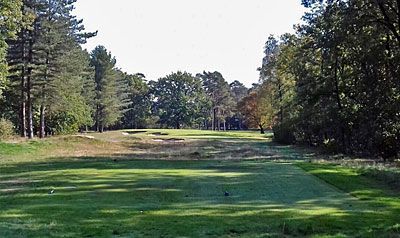
An hour’s drive northwest from The Dutch, on the other side of Utrecht, the course at Golfclub De Hoge Kleij sits within a forested private estate on the outskirts of Amersfoort.
Opened for play in the mid-1980s, it’s set out over a surprisingly undulating landscape, with around thirty metres of elevation change between the highest and lowest point on the course. Frank Pont has been busy here in recent years, advising on tree clearance, renovating greens and resequencing the holes.
Heelsum
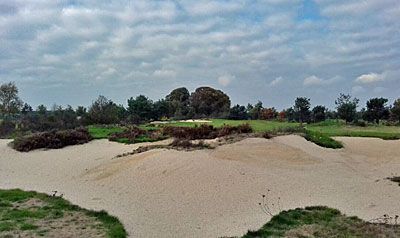
The 27-hole facility at Golfclub Heelsum in Arnhem is a new millennium design by Hans Hertzberger which was a new entry in the latest edition of our Netherlands rankings back in January, debuting at number 17.
Steve Marnoch has been working here for a number of years now, restoring a degenerated heathland habitat, re-bunkering the sand hazards with ragged edging, and improving the overall playing strategy of the original layout.
Links Valley
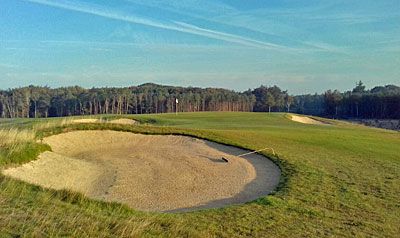
The Links Valley layout outside Ermelo in the Veluwe region of Gelderland only opened in May and it’s billed as Europe’s first reversible course. Designed by Frank Pont, the fairways are routed around 65 acres of the De Uller estate on a property that was once used as a quarry and then as a landfill site before it was capped with sand when it closed in 2006.
Taking his inspiration from The Architectural Side of Golf by H. N. Wethered and Tom Simpson, Frank decided to put into practice a theory discussed in this 1920s book referring to the principle of a reversible course so shaper Conor Walsh was tasked with fashioning the playing corridors to play in either a largely clockwise direction (the South nine) or an anti-clockwise direction (the North course).
The result is a fun track that stretches to just under three thousand metres, whichever way it’s played. The North has only one par five (at the 1st) and two par threes (the 3rd and 8th), while the South is a little more varied, configured with two par fives (#1 and #9) and three short holes (#2, #5 and #7). A very chic new clubhouse has just opened its doors for business and it’ll be interesting to see how things develop with this highly innovative endeavour.
Jim McCann
Editor
Top 100 Golf Courses